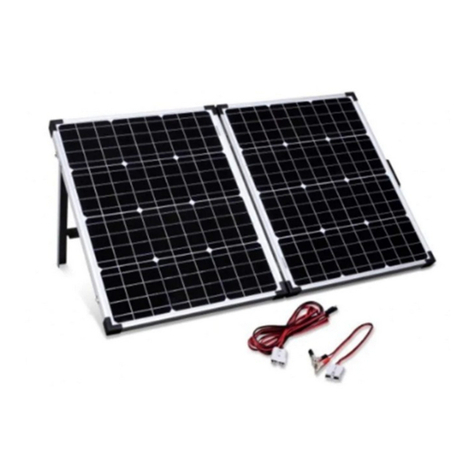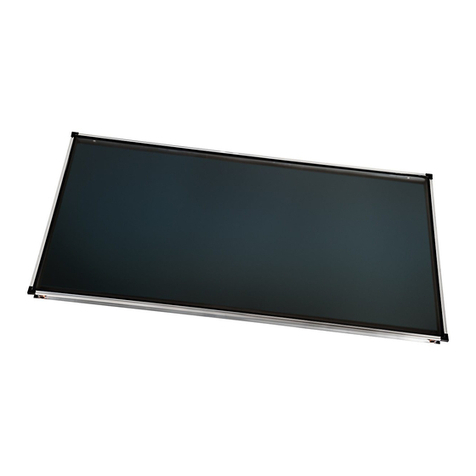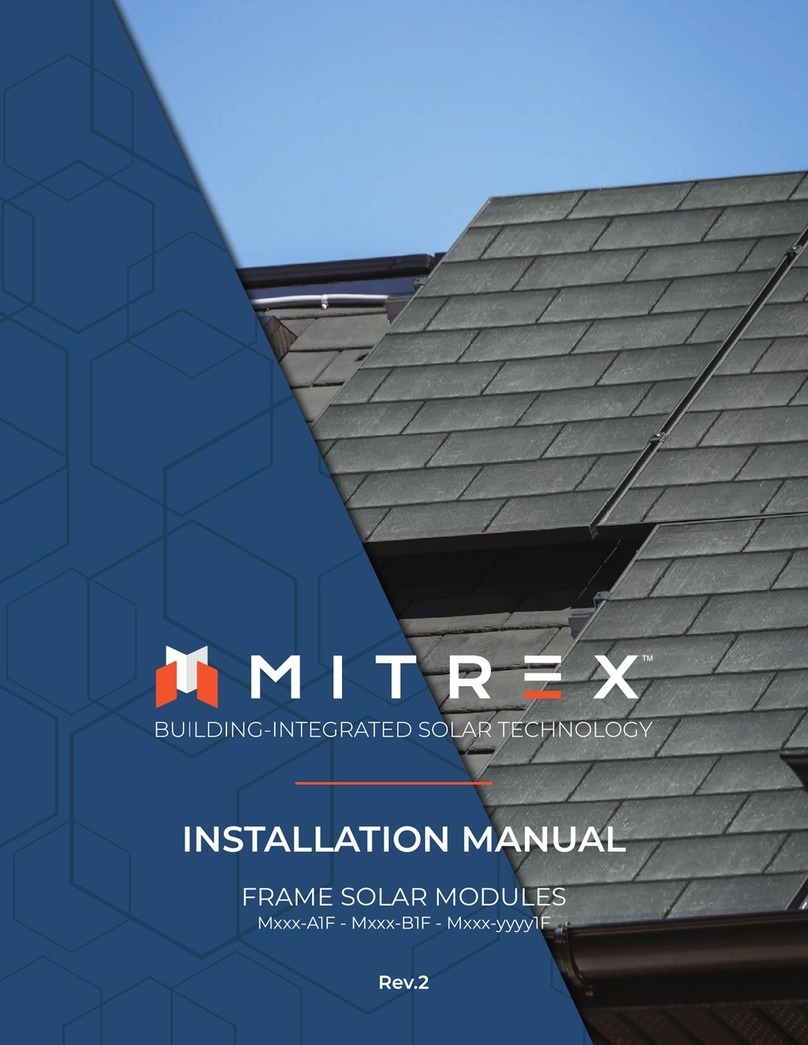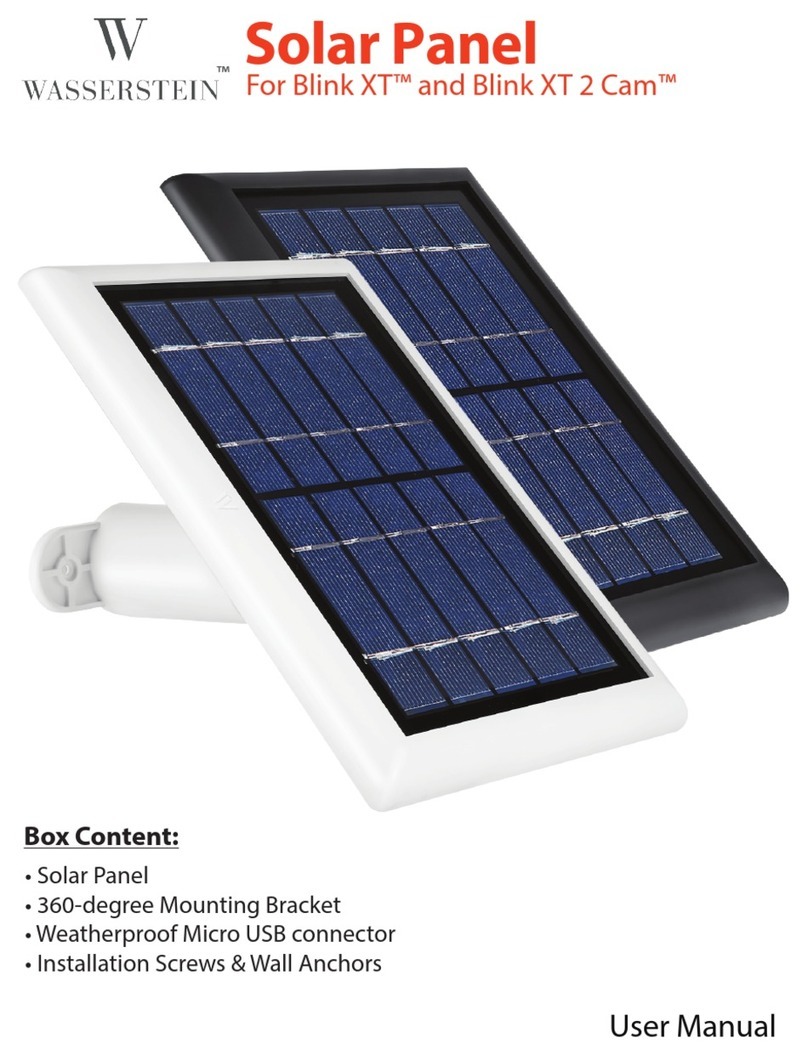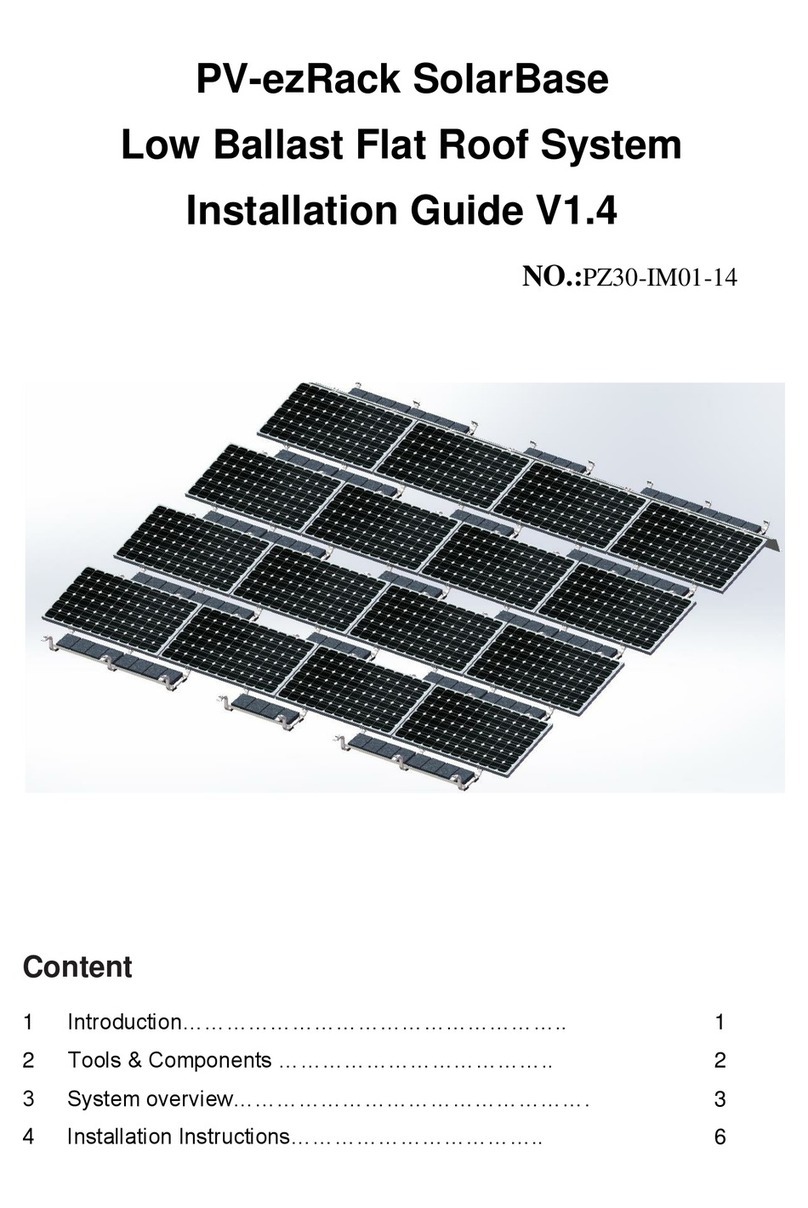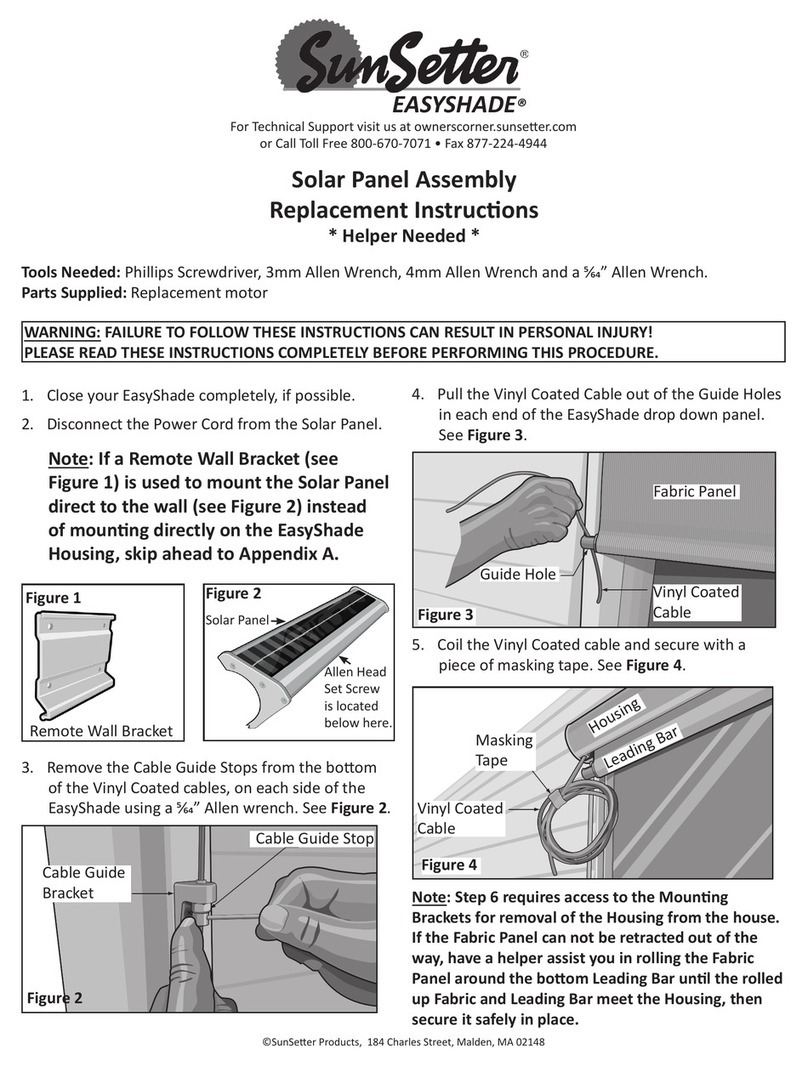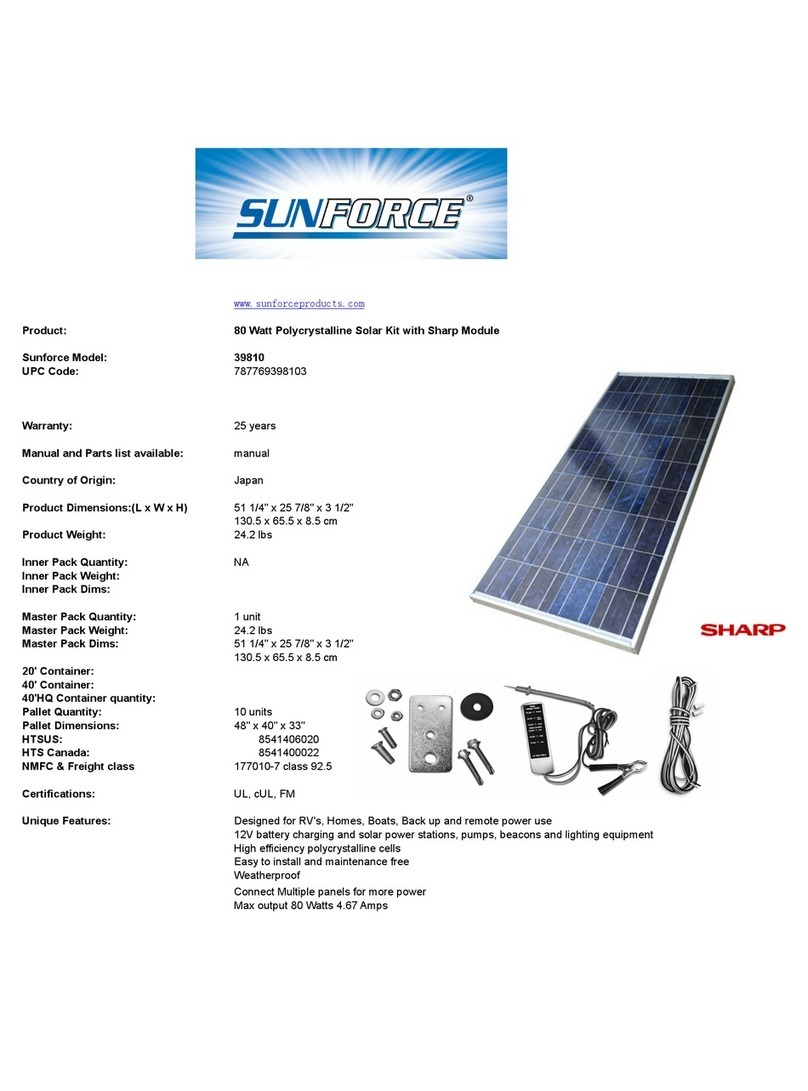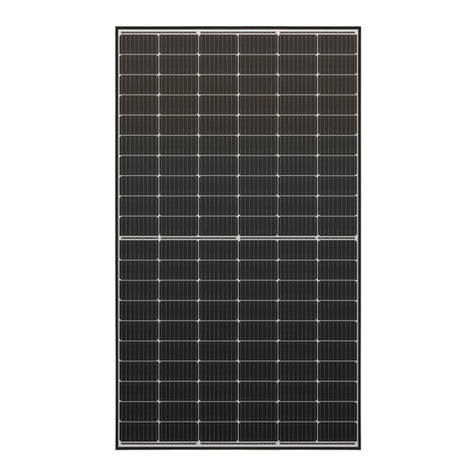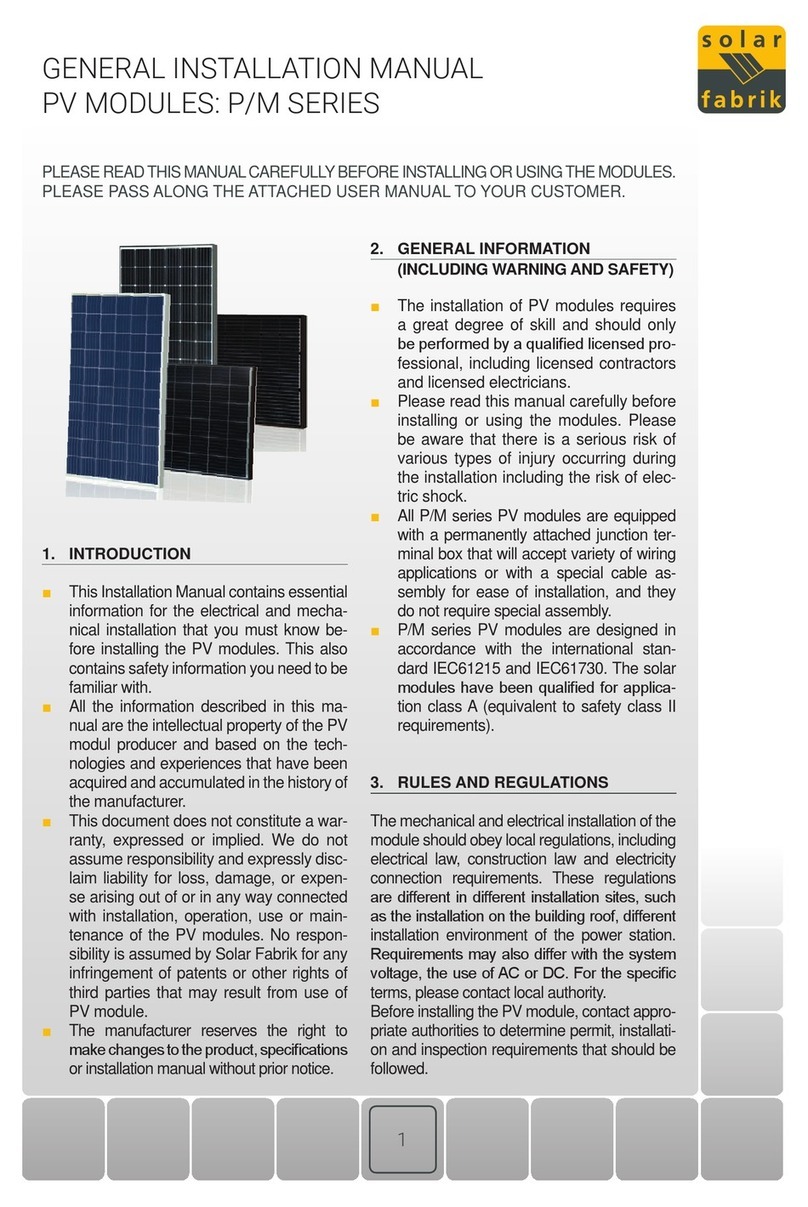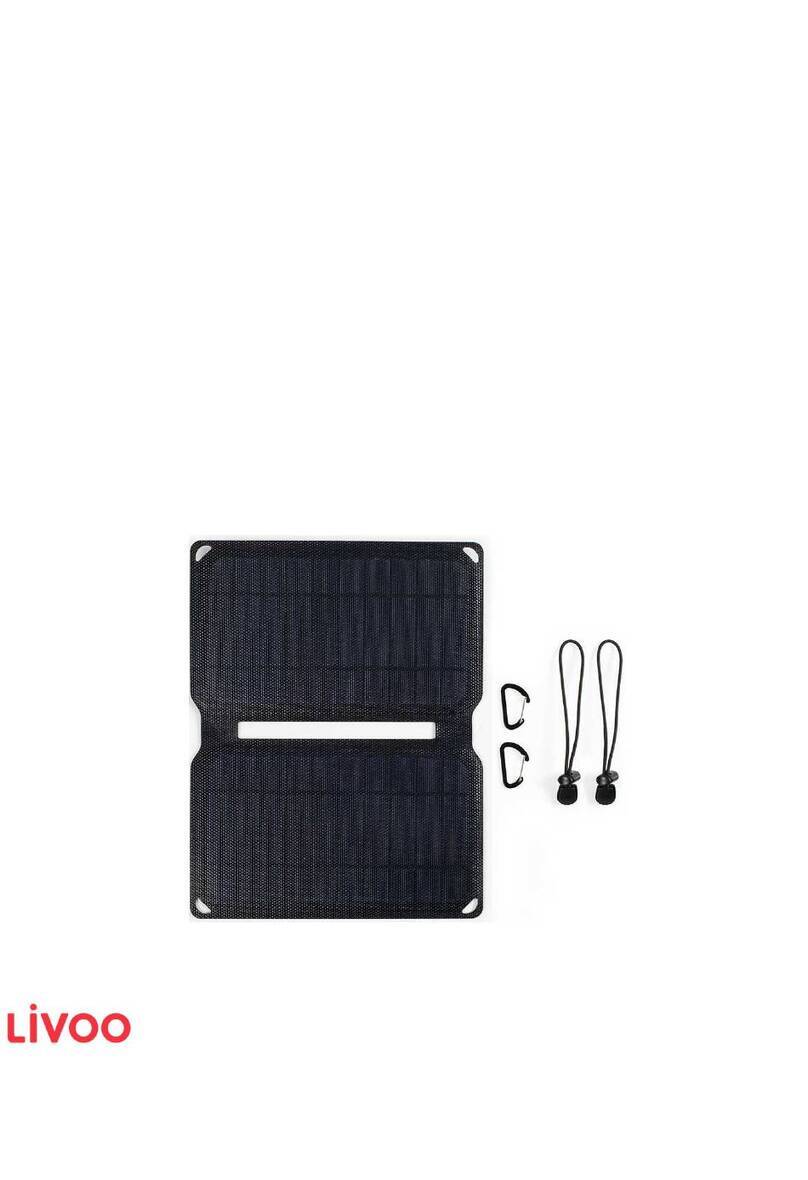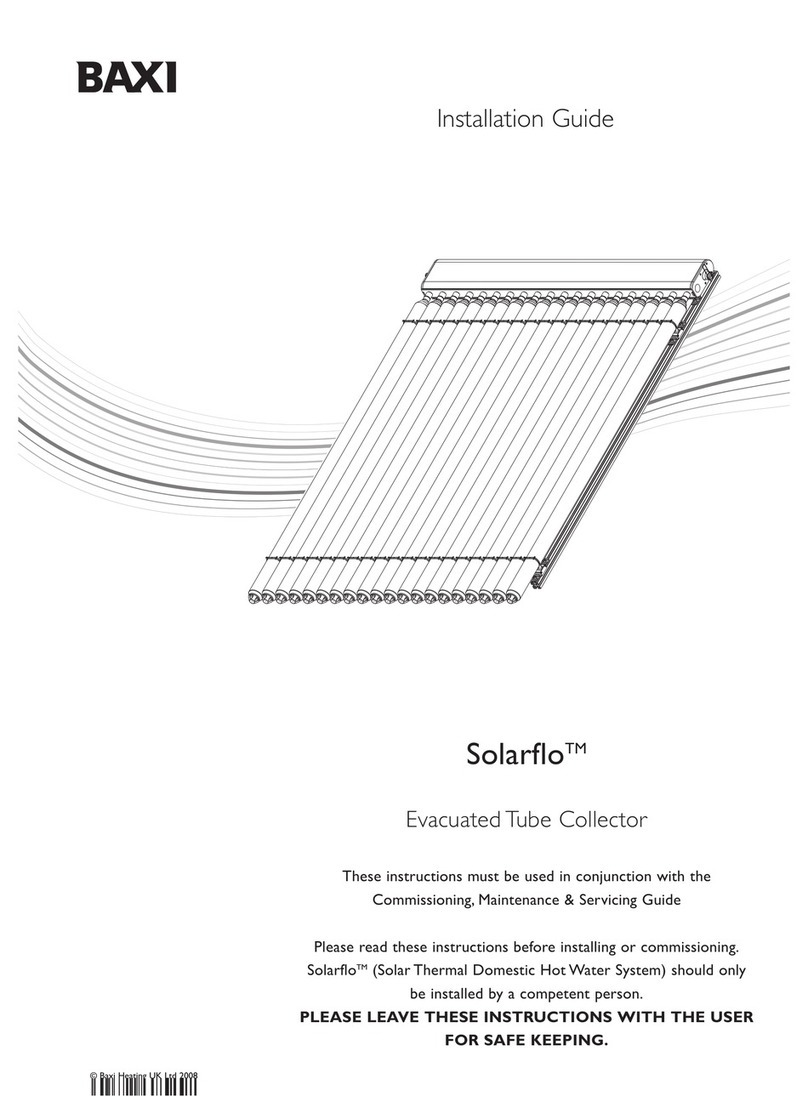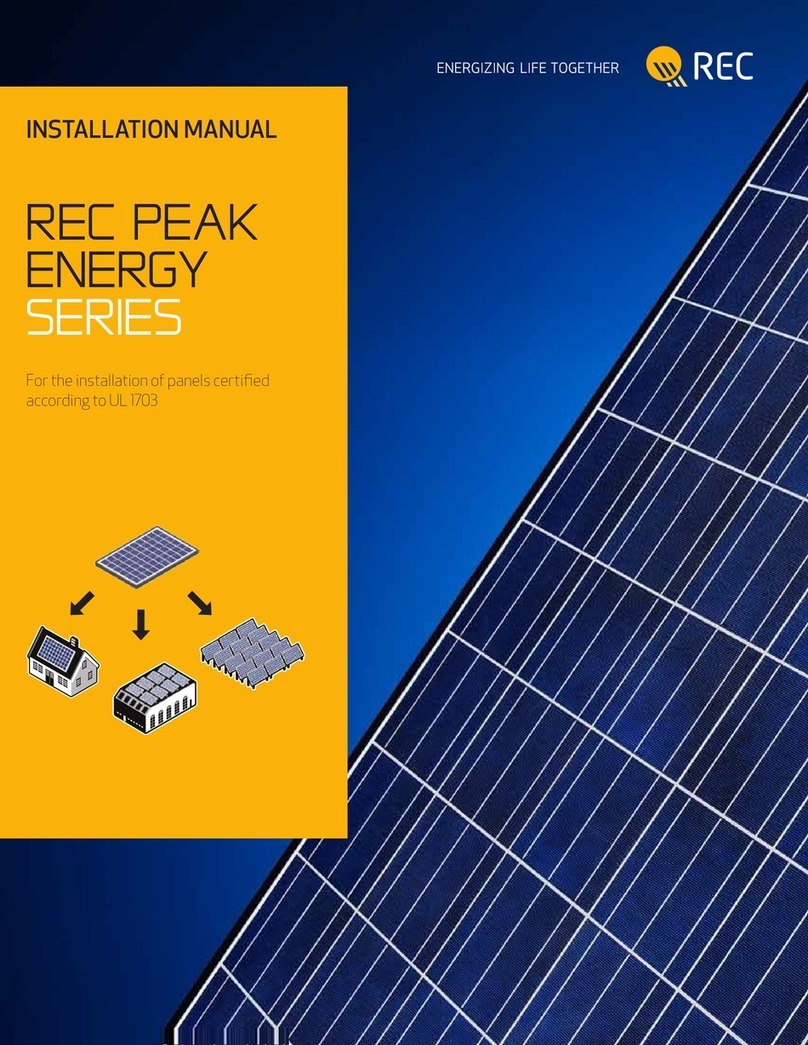
7
Correct handling of AR glass modules
The nano-porous coating on the glass surfaces of the solar
module reduces reection losses. Compared to uncoated
glass, a deviation of the irradiation angle from the vertical
can result in an angle-dependent transmission of up to 2
% more power. To maintain this effect and to avoid visual
impairments, we urgently recommend observing the follo-
wing instructions:
+Handle the modules with care due to the coated glass.
+Handle the modules with care when unpacking
and mounting. We recommend only touching
the surfaces with clean gloves because the
special reective properties make light soiling
easier to detect. Especially grease and oil are
visible even in small quantities and can inuence the
transmission.
+We advise against attaching stickers or labels
to the coated surface. Depending on the material used,
this can result in very ne residues
that are dicult to remove.
+In rare cases, there may be visible white residues of
the coating uid and colour variations
in the edge area (≤ 5 mm). These are fully functional
modules and there is no reduction in
quality.
+ If it is necessary to clean the modules due to
heavy soiling, we recommend the following
procedure:
+ Clean the modules when they have cooled down
(e.g. during the morning hours)
+ For moderate to strong residues, we recommend
cleaning with lukewarm, de-mineralised water and
clean, lint-free cotton cloths, microbre cloths or
paper towels
+ For particularly heavy and stubborn soiling, we
recommend detergents containing surfactants
+ Avoid cleaning with strong acids, alkaline solutions,
petrol-based cleaners, steam and hot cleaners, clea
ners with silicone oils, uorides or waxes,
polishes, alkaline cleaners and cleaners with scou-
ring agents and high-pressure cleaners.
+
This so-called anti-reective coating is subject to
coating tolerances, making the colour image of the
individual module different; this is most noticeable
in diffuse light.
Conrmation can be made that the anti-reective
coating may result in increased power yields and is
not a negative quality feature.
The phenomenon of optical differences should get
better after the rst few years of yield due to clima-
tic conditions, meaning that the system can be
operated in combination with these modules
without any reservations .
Technical Explanation of the cell production
process used in the manufacture of solar
modules
+The cells we use in the production of our panels are
classied as ‚A-Grade‘ cells without exception. Howe-
ver, the cell sorting process is undertaken both manu-
ally and mechanically. This can already lead to hetero-
geneous cell colours, which become visible through a
black backing lm.
+The cells used are both 166mm x 83mm and 182mm
x 91mm Mono Perc P-Type Halfcut cells or TOPCon N-
Type Halfcut cells. These module cells were subjected
to a coating thickness tolerance, this process can also
result in differences in colour.
+The cells were also treated with plasma-enhanced
chemical vapour deposition (PECVD) during the pro-
duction process. This separation process guarantees
improvements in eciency. However, it can also result
in differences in colour within the blue colour family.
Consequently, module cells may be light blue to grey
colour.
Independent of these processes, Solar Fabrik modules are
tested again by an independent test laboratory. Here, the
electro luminescence shows the desired quality characte-
ristics. This guarantees worry-fee operation.
Solar module mounting instructions
Mono S5 / Mono S4 / Mono S3 / Mono S2 / M Serie / P Serie
















